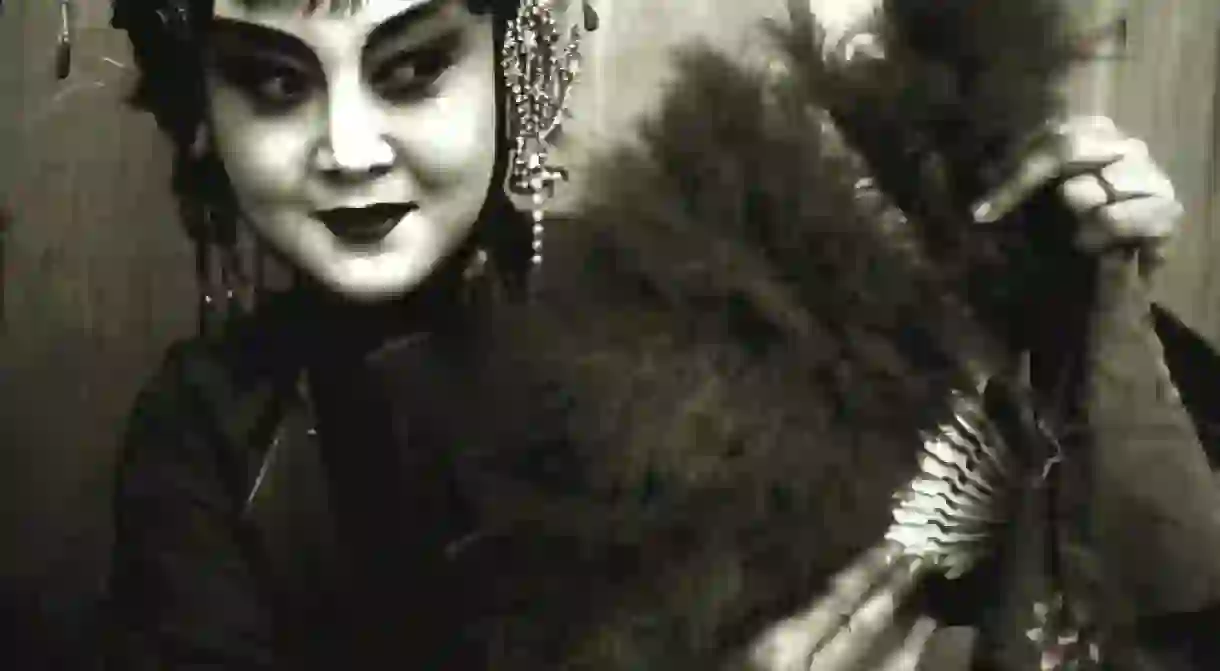Portrait Of A Nation: Liu Zheng's Visual Encyclopaedia

Begun in early 1994 by Chinese photojournalist Liu Zheng, The Chinese photographic series could well be described as Liu’s biography of modern China. Travelling extensively throughout China over eight years, Liu captures portraits of individuals from all walks of life. Culture Trip explores his encyclopaedic endeavor.
In The Chinese, Liu has effectively conceived of a visual archive of modern China akin to the laboured documentation of early western ethnographers. Liu’s candid images of prosperous landowners, transsexuals, performers, discarded foetuses, the poor, destitute and forgotten reads like a vast visual encyclopaedia to one of the most densely populated countries in the world.

Liu Zheng, Peking Opera Actress Holding Fan, Beijing, 1996.
Liu Zheng’s influence on the contemporary Chinese art scene can be measured in his unbridled ambition for seeking the truth. Distrusting the apparatus of information in China; Liu in his photography attempts to challenge the tired revolutionary imagery of men and women at the precipice of a mountain, holding aloft copies of Mao’s red book whilst reaching for the stars. The reality that Liu reveals through his photographs is closer to the gutter. Images of beleaguered figures on street corners; devotees, deviants and the destitute are all from the underbelly of the state.

Liu Zheng, Three Deaf Mute Performers, Shenyang, Liaoning Province, 1998.
Liu Zheng, born in Wuqiang County, Hebei Province, China, in 1969, grew up in Datong, a mining town in Shanxi Province and currently lives and works in Beijing. For much of the 1990s Liu Zheng worked as a committed photojournalist for the Chinese Workers’ Daily. Exposed to every element of the Chinese social strata, such circumstances impressed upon Liu the resolve of the Chinese, who in spite of their candour for the camera remained anonymous to the outside world.

Liu Zheng, Xinjiang Girl Working In a Textile Factory, Hetian, Xinjiang Province, 1996.
The 1980s in China was a time of great social and cultural change, in which China’s leader, Deng Xiaoping, opened up the economy to foreign investment. During this time the revolutionary spirit of the state was replaced by a measured focus on economic evolution led by well-educated, professional technocrats.
Liu captures the impact of these changes on the Chinese people, as vast numbers shifted from their rural homes to the cities, attracted by the promise of potential wealth. Many of those in Liu’s portraits are powerless and penniless migrants who appear to have absorbed political and cultural traditions at the expense of their own self-worth. Tellingly Liu’s photo-works critique a modern China that has arrived at its zenith at the expense of its people.

A Rural Boy in School Uniform, Fengxiang, Shaanxi Province, 2000.
Historically Liu’s photographs can be likened to the visual integrity of American photographer Diane Arbus, who also employed black-and-white square format photographs in the late 1960s. Raw and unruly this was Arbus’ way of scrutinising the truth at a time when influences such as the ‘Beat Generation’ were introducing new narratives to American culture. There is a sense that Liu was seeking something of the absurdity and fatalism of Arbus’ works.
For Liu another leading light was the work of German documentary photographer August Sander, who was responsible for the defining series of portraits People of the 20th Century, for which he photographed people from the German Weimar Republic. Significantly when considering international influences, The Chinese series can be described more as photographs of an international reputation, made by a Chinese photographer, and less Chinese photography by a Chinese artist.

Liu Zheng, Dancers in a Nightclub, Beijing, 1999.
A modern ethnographer in his own country, Liu seeks to document the Chinese people in the face of significant social and cultural flux. For Liu Zheng, The Chinese is a substantial reexamination of the Chinese individual.

Liu Zheng, A Taoist Monk Wearing Patchwork Clothes, Beijing, 1994.
Images courtesy of Pékin Fine Arts













